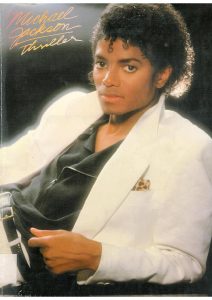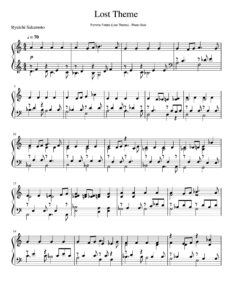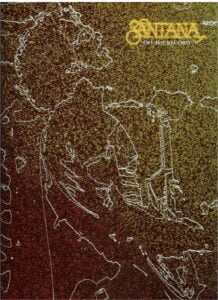Table of Contents
Quincy Jones dies at 91.
Quincy Jones died this Sunday at the age of 91 at his home in Bel Air (Los Angeles) surrounded by his family. His figure is undoubtedly one of the most influential in the history of contemporary music, with important weight in various genres and fields. His work not only resonates in genres such as jazz, soul, and pop, but also in areas such as musical production, changing the way of understanding the role of the producer as a sound architect.
Please, subscribe to our Library.
If you are already a subscriber, please, check our NEW SCORES’ page every month for new sheet music. THANK YOU!
Quincy Delight Jones, Jr. began his career as a trumpeter and arranger in the 1950s, during which time he worked with jazz greats such as Count Basie and Dizzy Gillespie. His ability for orchestral arrangements allowed him to experiment combining jazz with African-American rhythms and elements of classical music, which not only earned him recognition in his time, but also paved the way for him in musical production and direction. It was at this stage where he befriended iconic figures such as Ray Charles, Miles Davis and Billie Holiday , and in 1956 he undertook a tour as trumpeter for the aforementioned Dizzy Gillespie.

He lived in Paris, where he studied composition with the renowned Nadia Boulanger and Olivier Messiaen . In the French capital, he collaborated with renowned figures such as Leonard Bernstein and worked at Barclay Records, establishing himself as musical director and arranger. In 1961, back in New York, he was named vice president of Mercury Records, becoming one of the first African Americans to hold a senior position in the industry. His success as a producer included collaborations with artists such as Peggy Lee and Sarah Vaughan , and in 1963 he won his first Grammy for the arrangements of “I Can’t Stop Loving You” by the Count Basie Orchestra.

Best Sheet Music download from our Library.
His greatest period of popularity was during the 1980s, when he consolidated his influence as a producer, especially with Thriller Michael Jackson ‘s album . This album, the best-selling of all time, is considered a masterpiece of modern production, and its success would not have been possible without the sensitivity and creativity of Jones, whose approach elevated the role of the producer to a category of integral creator, responsible for both the sound and the musical identity of the artist himself.

In addition to his role in producing iconic albums like this one, Jones was also a pioneer in the integration of African-American music into the mainstream, promoting inclusivity and openness to artists of color in an industry historically dominated by whites. His leadership in this regard was crucial to genres like soul and funk gaining visibility and respect, and paved the way for future generations of artists of color. Likewise, his work as executive producer and mentor has been essential for the development of emerging talents, helping artists such as Lionel Richie, Patti Austin and Will Smith consolidate their careers.
Jones also stood out in film and television, composing soundtracks for films such as In Cold Blood, The Getaway and The Color Purple . On television, his themes for series such as Ironside and The Cosby Show became popular.
Rest in power, Quincy Jones.

Quincy Jones: The Birth of a Band!
Musician: Quincy Jones.
Accompanists: Al Cohn, Melba Liston, Nat Pierce and Quincy Jones (arrangements); Milton Hinton (b); Sam Woodyard (dm); Patricia Anne Bown (p); Benny Golson, Frank Wess, Phil Woods, Sahib Shihab and Zoot Sims (saxes); Jimmy Cleveland, Melba Liston, Quentin Jackson and Urbie Green (trombones); Clark Terry, Ernie Royal, Joe Newman and Quincy Jones (trumpets).
Recording Date: 1959. June 16.
Recording Location: New York.
Record Label: Fontana.
The Big Band led by Quincy Jones in 1959 was probably the best of his entire career. With its fabulous arrangements, and also using the support and experience of other enormous arrangers such as Al Cohn or Nat Pierce, Quincy, before leaving for Europe on tour, brings together a good handful of creative soloists, virtuoso instrumentalists who achieved, in this November 1959 recording session, memorable moments of his career.
In one of his best jazz recordings, Jones’ arrangements feature top musicians such as: Milton Hinton on bass, Sam Woodyard, on drums, Patricia Anne Bown on piano, and saxophonists: Benny Golson, Frank Wess, Phil Woods, Sahib Shihab and Zoot Sims. Tremendously modern music, spectacular arrangements and a careful repertoire of ten songs, where, above the excellent general tone of the session, the wonderful compositions of Benny Golson stand out: “Whisper Not”, and “I ‘Remember Clifford”.
The Birth Of A Band
Quincy Jones – The Birth Of A Band (Playlist)
Personnel
Quincy Jones – arranger, conductor
Harry Edison – trumpet
Joe Newman – trumpet
Ernie Royal – trumpet
Clark Terry – trumpet
Joe Wilder – trumpet
Billy Byers – trombone
Jimmy Cleveland – trombone
Urbie Green – trombone
Melba Liston – trombone
Tom Mitchell – trombone
Julius Watkins – French horn
Jerome Richardson – flute, alto saxophone, tenor saxophone, piccolo
Frank Wess – alto saxophone, flute
Phil Woods – alto saxophone
Benny Golson – tenor saxophone
Budd Johnson – tenor saxophone
Zoot Sims – tenor saxophone
Sam Taylor – tenor saxophone
Danny Bank – baritone saxophone
Sahib Shihab – baritone saxophone
Patti Bown – piano
Moe Wechsler – piano
Kenny Burrell– guitar
Les Spann – guitar
Milt Hinton – bass
Jimmy Crawford - drums
Osie Johnson – drums
Don Lamond – drums
Sam Woodyard – drumsTrack listing
"The Birth of a Band" (Quincy Jones) – 2:53
"Moanin'" (Bobby Timmons) – 3:02
"I Remember Clifford" (Benny Golson) – 3:42
"Along Came Betty" (Golson) – 3:21
"Tickle Toe" (Lester Young) – 2:55
"Happy Faces" (Sonny Stitt) – 2:40
"Whisper Not" (Golson) – 3:22
"The Gypsy" (Billy Reid) – 4:05
"A Change of Pace" (Harry Arnold, Quincy Jones) – 3:20
"Tuxedo Junction" (Erskine Hawkins, Bill Johnson, Julian Dash, Buddy Feyne) – 2:44Browse in the Library:
| Artist or Composer / Score name | Cover | List of Contents |
|---|---|---|
| Saint-Säens – Piano Concerto No. 4 Op. 44 – 1st Mov. Piano Solo Arr. For 2 Pianos (Musescore File).mscz | ||
| Saint-Saëns Danse Macabre Op. 40 trans. Ritter – piano | Saint-Saens Danse macabre | |
| Saint-Saëns Piano Concerto No.1 2nd Mvmt (Arr. For 2 Pianos) (Musescore File).mscz | ||
| Saint-Saëns Samson et Dalila – Selections Arr HCramer 2 PS | ||
| Saint-Saëns Selected Piano Pieces + 2 Piano Transcriptions |
 |
|
| Saint-Saens_1st_Piano_Concerto_3rd_Mov. Arr._for_2_pianos.mscz | ||
| Sakamoto – Solari (full score) (Musescore File).mscz | ||
| Sakamoto Henkaku No Seiki (Century of Reform) Piano Solo | Sakamoto Henkaku No Seiki (Century of Reform) Piano Solo | |
| Sakamoto Merry Christmas Mr Lawrence (Easy piano) |
 |
|
| Sakamoto Ryuichi Amore |
 |
|
| Sakamoto Ryuichi Bibo No Aozora Piano Solo |
 |
|
| Sakamoto Ryuichi Lost Theme From Femme Fatale Piano Solo |
 |
|
| Sakamoto Ryuichi Ryuichi Sonatine |
 |
|
| Sakamoto Ryuichi Ryuichi The Sheltering Sky Piano Solo |
 |
|
| Sakamoto Ryuichi Solitude Piano Solo |
 |
|
| Sakamoto, Ryuichi Piano Solo Collection |
 |
Sakamoto, Ryuichi – Piano Solo Collection |
| Sakamoto, Ryuichi Merry Christmas Mr Lawrence (Piano Solo Arr.) |
 |
|
| Sakamoto, Ryuichi – Germination Call Me By Your Name Sheet Music | Sakamoto, Ryuichi – Germination Call Me By Your Name Sheet Music | |
| Sakamoto, Ryuichi – Solari (Piano Solo Arr.) From Async | Sakamoto, Ryuichi – Solari (Piano Solo Arr.) From Async | |
| Sakamoto, Ryuichi Aoneko No Torso Playing The Piano |
 |
|
| Sakamoto, Ryuichi Undercooled |
 |
|
| Sally The Musical Piano Vocal Score (Jerome Kern, Guy Bolton, Clifford Grey) |
 |
|
| Salsa & Afro Cuban Montunos for Piano by Carlos Campos |
 |
|
| Salsa Piano – Hector Martignon |
 |
Salsa Piano – Hector Martignon |
| Salsa Piano Méhode D’accompagnement 14 Grands Standards (Français French) |
 |
salsa piano |
| Salut (Hélène Ségara) | ||
| Salut D’amour (Musescore File).mscz | ||
| Salvatore Adamo – The Best Hits Collection sheet music Meilleurs succes partition |
 |
Salvatore Adamo – The Best Hits Collection sheet music Meilleurs succes partition |
| Sam And Dave Hold on I’m comin’ |
 |
|
| Sam And Dave Soul Man |
 |
|
| Sam Brown – Stop | ||
| Sam Cooke Portrait Of A Legend – Songbook |
 |
Sam Cooke Portrait Of A Legend |
| Sam Smith Writings On The Wall Theme From Spectre James Bond 007 |
 |
|
| Sam Smith, Kim Petras – Unholy Sheet Music |
 |
|
| Samba em Preludio (Baden Powell) | ||
| Samba Fake Book (Vocal & Guitar) |
 |
Samba Fake Book (Vocal & Guitar) |
| Sammy Kahn – I Fall In Love Too Easily (Jazz) |
 |
|
| Samuel Adler – El Estudio de la Orquestación (Spanish-Español) |
Book Theory |
|
| Samuel Adler The Study of Orchestration 2nd.ed |
Book Theory |
|
| Sandy Feldstein – Practical Music Theory Complete |
 |
|
| Sangah Noona 251 II-V-I In Five Forms Sangah Noona |
 |
|
| Sangah Noona Autumn Leaves Piano By Sangah Noona |
 |
|
| Sangah Noona Get Back Cover |
 |
|
| Sangah Noona Still Got The Blues |
 |
|
| Sans toi (Cleo from 5 to 7) Michel Legrand | ||
| Santana – Best Of Carlos Santana Signature licks by Wolf Marshall |
 |
Santana – Best Of Carlos Santana Signature licks by Wolf Marshall |
| Santana – Smooth | ||
| Santana Off The Record Full Score |
 |
Santana Off The Record Full Score |
| Sanz Suite Española Canarios arr. for Piano (Noten für Klavier) by Wilfried Wachter |
 |
|
| Sara Bareilles – Manhattan Sheet Music |
 |
|
| Sarabande (Musescore File).mscz | ||
| Sarah Brightman – Time to Say Goodbye (Sheet Music) |
 |
|
| Sarah Brightman NELLA FANTASIA | Sarah Brightman NELLA FANTASIA | |
| Sarah Mclachlan – Adia | ||
| Sarah Mclachlan – Angel | ||
| Sarah Mclachlan – Fallen | ||
| Sarah Mclachlan – I Will Remember You | ||
| Sarah Mclachlan – Last Dance | ||
| Sarah Mclachlan – Surfacing Piano Guitar Vocal |
 |
Sarah Mclachlan – Surfacing Piano Guitar Vocal |
| Sarah Mclachlan – When She Loved Me – Toy Story 2 | ||
| Sarah McLachlan Afterglow |
 |
|
| Sarah Vaughan – Queen of Bebop – Elaine M. Hayes (Book) THe Musical Lives of Sarah Vaughan (Book) |
 |
|
| Sartori, Francesco – Time To Say Goodby (Con Té Partiró) |
 |
|
| Satellite (Lena Meyer-Landrut) | ||
| Satie – Pièces Froides Danses De Travers No. 1 (Musescore File).mscz | ||
| Satie – 1st Gymnopédie (Musescore File).mscz | ||
| Satie – Gnossienne No. 1 (Musescore File).mscz | ||
| SATIE – Gnossienne No. 1-6 | SATIE – Gnossienne No. 1-6 | |
| Satie – Je Te Veux (Musescore File).mscz | ||
| Satie – Je te veux (Sheet music for piano) | Satie – Je te veux (Sheet music for piano) | |
| Satie 6 Gnossiennes Mandozzi Piano seul |
 |
|
| Satie Gnossienne 1 Guitar |
 |
|
| Satie Gnossienne 5 |
 |
|
| Satie, Erik 3 Nocturnes |
 |
|
| Satie, Erik – Cinema – Complete Sheet Music (Full score) | ||
| Satie, Erik 3 Gymnopédies pour Piano | Satie, Erik 3 Gymnopédies pour Piano | |
| Satin Doll (Duke Ellington & Billy Strayhorn) (Musescore File).mscz | ||
| Satoshi Takebe From Up On Poppy Hill Reminiscence |
 |
Satoshi Takebe From Up On Poppy Hill Reminiscence |
| SAU – Boig Per Tu |
 |
|
| SAU Boig per tu (original) | SAU Boig per tu (original) | |
| Savage Garden – I Knew I Loved You | ||
| Savage Garden – Truly Madly Deeply | ||
| Savage Garden – Two Beds And A Coffee Machine | ||
| Savatage – Bleed | ||
| Save Room Medley Resident Evil Piano Solo |
 |
|
| Saxophone Voicing by Donald J Sinta |
 |
|
| Scales And Arpeggios Learn How To Play Piano or Keyboard By Martin Woodward |
 |
|
| Scales And Arpegios For Piano by Donald Gray (for exams of ABRSM, Trinity and The Gguildhall School of Music) |
 |
|
| Scales And Modes For The Jazz Pianist by Larry Agovino |
 |
|
| Scales Chords Arpeggios By James Bastien |
 |
Scales Chords Arpeggios By James Bastien |
| Scales For Jazz By Jeff Lewis |
 |
|
| Scales For Jazz Improvisation | Scales For Jazz Improvisation | |
| Scales For Jazz Improvisation. (Dan Haerle) |
 |
|
| Scarborough Fair Canticle Simon And Garfunkel (Piano, Lyrics, Guitar Chords) |
 |
|
| Scarlatti, Domenico – Complete Sonatas for Piano |
 |
 |
| Scat Omnibook for Vocalists and C Instruments Trancribed exactly from the original recordings |
 |
Scat Omnibook for Vocalists and C Instruments Trancribed exactly from the original recordings |
| Schindler’s List – John Williams (Piano Solos) |
 |
Schindler’s List – John Williams |
| Schindler’s list (John Williams) Piano Solo Main Theme | ||
| Schmitt – Preparatory Exercises, op 16 | ||
| Schnittke, Alfred – Two pieces for organ (music score) |
 |
|
| Schoenberg Sechs Kleine Klavierstücke Op 19 |
 |
|
| Schoenberg Drei Klavierstüke Op 11 (Three piano pieces) |
 |
|
| Schoenberg Ejercicios Preliminares De Contrapunto (Spanish-Español) | Book Theory | |
| Schoenberg Master Musicians Series (eBook) Biography |
 |
|
| Schoenberg’s Twelve-Tone Music by Jack Boss Symmetry and Musical Idea (Book) |
 |
|
| Schönberg – I Dreamed A Dream (From Les Misérables) (Musescore File).mscz | ||
| Schönberg – I Dreamed A Dream (From Les Misérables) Piano Solo arr | Schönberg – I Dreamed A Dream (From Les Misérables) Piano Solo arr | |
| Schonberg – Les Miserables (Selections) |
-218x300.jpg) |
Les Miserables |
| Schostakovich Piano Concerto No. 2 Solo Piano (Musescore File).mscz | ||
| Schubert Franz 30 Melodies Choisies – Collection Litolff | Schubert 30 melodies | |
| Schubert – 4 Impromptus Op 90 |
 |
|
| Schubert – 4 Impromptus Op 142 | Schubert – 4 Impromptus, Op 142 | |
| Schubert – 6 Moments Musicaux D780 | ||
| Schubert – Allegretto In C Minor D.915 (Musescore File).mscz | ||
| Schubert – Ave Maria (D 839) Piano Solo Arr. Ellens Gesang Iii D. 839 Op. 52 No. 6 (Musescore File).mscz | ||
| Schubert – Ave Maria (D 839) Piano Solo arr. Ellens Gesang III D. 839, Op. 52, No. 6 | Schubert – Ave Maria (D 839) Piano Solo arr. Ellens Gesang III D. 839, Op. 52, No. 6 | |
| Schubert – Ave Maria (Musescore File).mscz | ||
| Schubert – Ave Maria D.839 Easy Piano Solo arr. (sheet music, Noten, partitura, partition) |
 |
|
| Schubert – Ave Maria D.839 Piano Solo arr. (sheet music, Noten, partitura, partition).mscx | ||
| Schubert – Ave Maria D839 Solo_Piano_Arr |
 |
